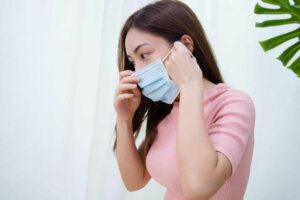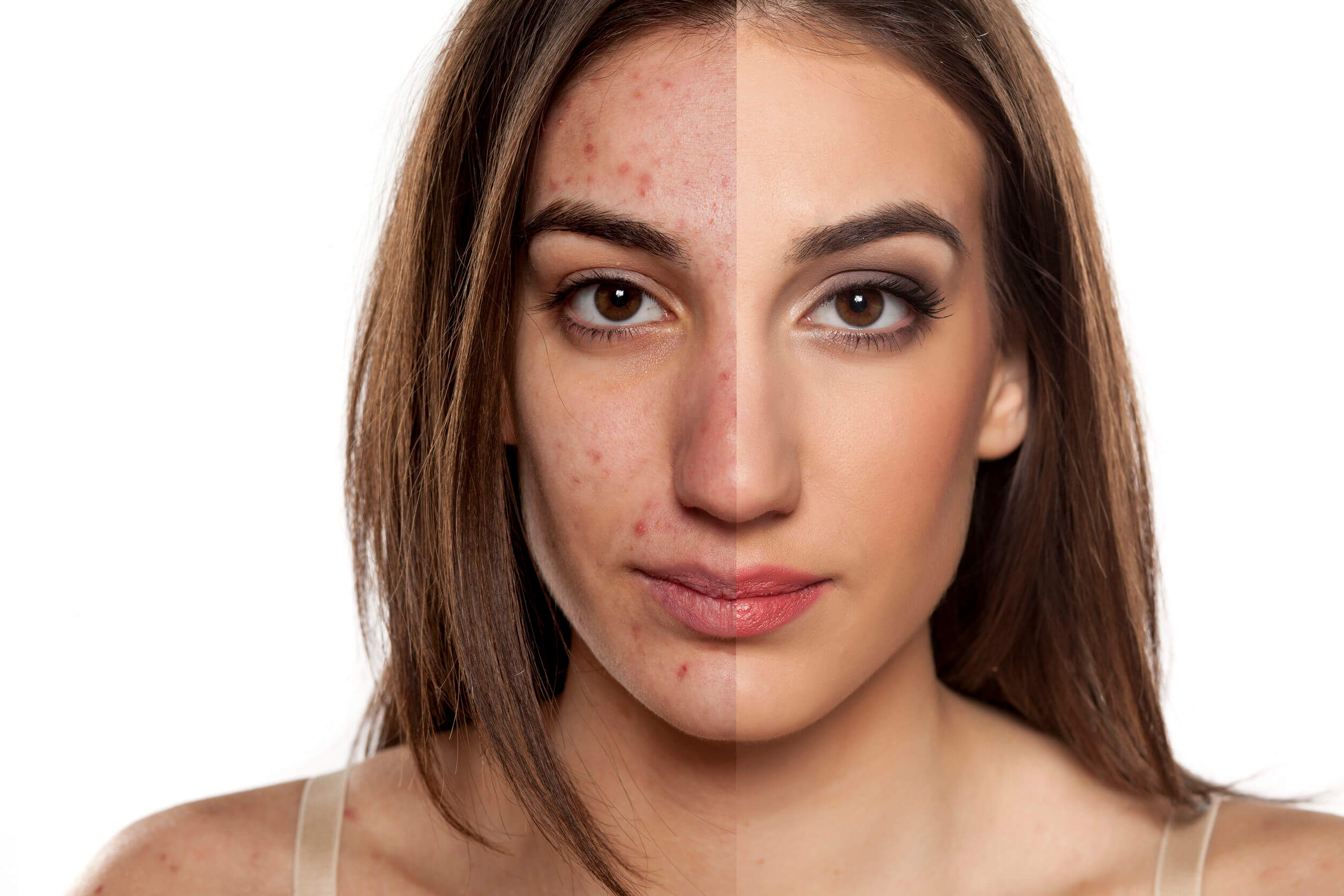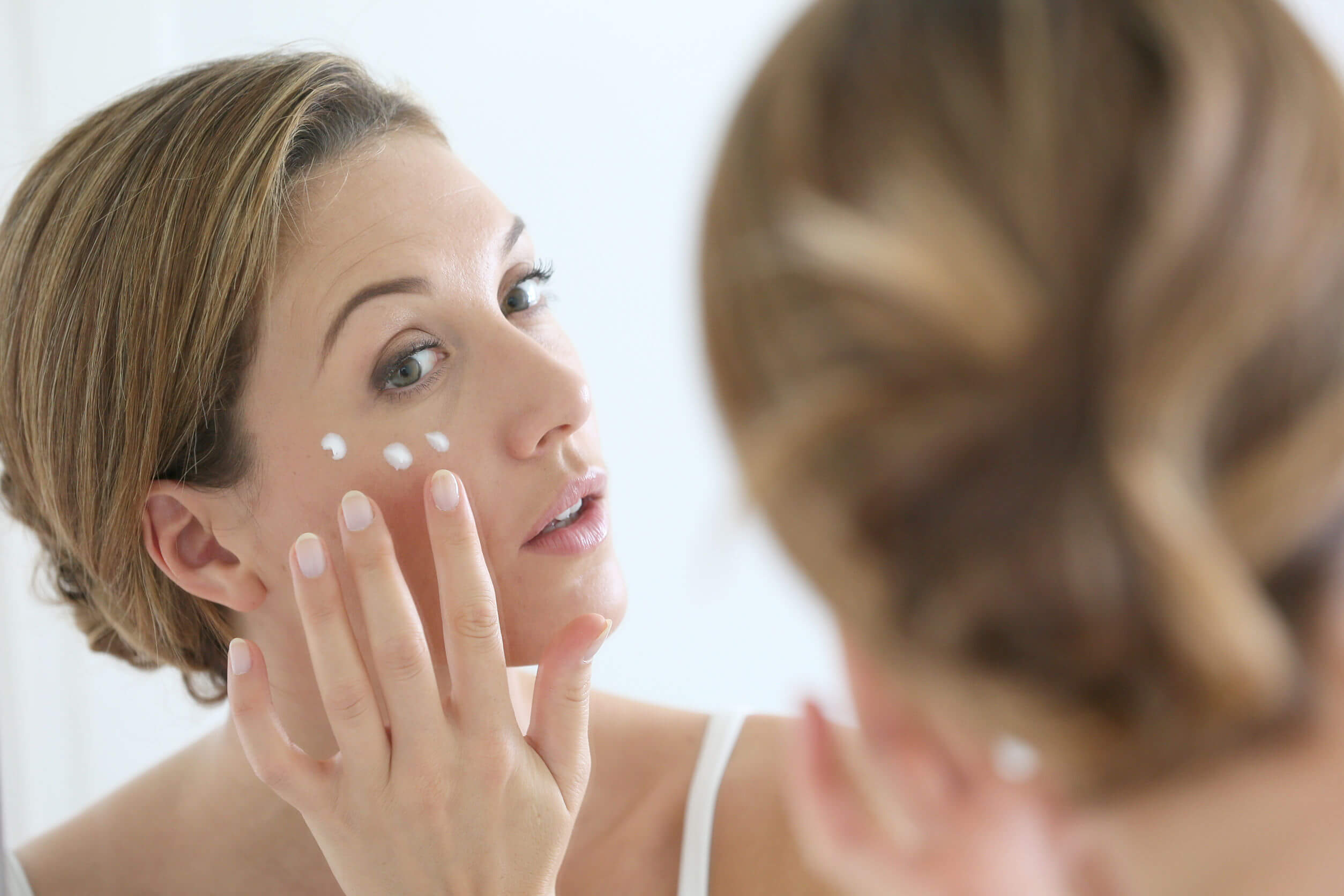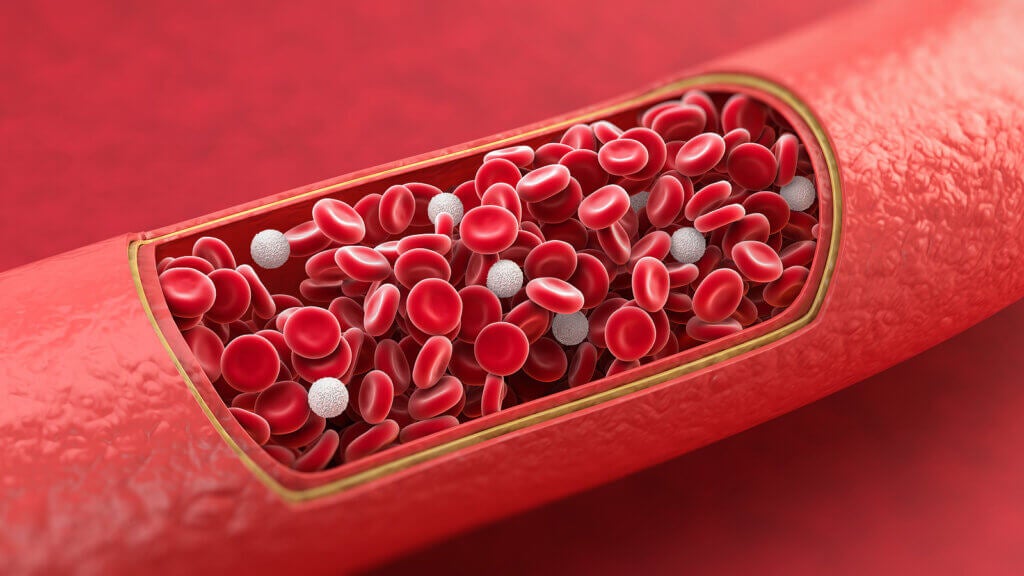Maskne: What Is it and How to Treat It?

With the arrival of COVID-19, one of the worldwide methods to prevent its spread is the use of masks. For this reason, having to wear it in public places such as parks, restaurants, and shopping centers have made it an item that we can’t do without in our daily routine. However, there’s another phenomenon that has arrived with it: maskne. Find out what it is in this article.
Some people have claimed that they’re getting outbreaks of acne due to the use of a mask. Has it happened to you? Well, you aren’t alone. These outbreaks and other skin problems caused by the use of the mask have been dubbed maskne.
Stopping using masks might not be a viable option. So, if this is something that’s affecting you, then find out what it is, and how it’s treated and prevented.
What is maskne?
Maskne is the term given to different skin conditions, which are caused or worsened (if you already suffer from these problems) by the use of a face mask or face covering. Among these conditions are:
- Rosacea: Increases the likelihood of pimples, breakouts and redness.
- Acne: Could increase the appearance of pimples, pimples or blackheads, due to the clogging of the pores caused by oils, dead skin or dirt.
- Folliculitis: A sensation of pain or itching, thanks to the infection of the hair follicles, and its appearance is similar to the bumps of an acne breakout.
- Contact dermatitis: This is caused by an allergy to the material of the mask, which could result in irritation, a red rash and blisters.
What causes it?
The causes of the symptoms from the use of the mask can vary, as various skin conditions are involved. Clogged pores are believed to be the most common reason for maskne.
When wearing a mask, oils, bacteria or dead skin tend to accumulate more and, therefore, block the pores. In addition to this, sweating and breathing cause humidity, which increases the risk of the appearance of pimples.
Depending on the material the mask is made of, it can cause friction and irritation to the skin. In most cases, it’s because the person is sensitive or allergic to the material.
In others, it could be due to scented detergents used to cleanse the mask, which, in turn, cause skin irritation after considerable time of use.

How to treat maskne
Dispensing with the use of a face cover is not an option at the moment. After the arrival of COVID-19, keeping your mouth and nose covered is, until now, the best way to protect yourself from this infectious disease. And, although suffering from skin conditions from the mask can be worrying, there are several ways to treat the symptoms of maskne.
1. Wash your face regularly
The American Academy of Dermatology Association recommends that, despite the pandemic, you shouldn’t break your skincare routine to maintain perfect skin.
To do this, use warm water to wash your face, a special soap for your skin type and pat it dry with a clean towel. Also, avoid rough rubbing as this could cause irritation.
Similarly, it’s recommended that you wash your face once in the morning, once at night or before going to sleep, and after wearing a mask or sweating.
The constant use of a mask should not interfere with your skin care routine.
2. Use a mild cleanser to treat maskne
Whatever your skin type, don’t use cleansers that contain perfume or alcohol. There is scientific evidence that shows these could make it harder for mask conditions to heal and exacerbate irritation. To remove grease, bacteria, or sweat, use mild cleansers.
You can use medicated cleansers that contain salicylic acid or benzoyl peroxide to sanitize your masks. However, remember that each type of dermis requires special care and products – consult your dermatologist for a medicinal cleanser that best suits you.
3. Use a non-comedogenic moisturizer
Non-comedogenic products are those that prevent clogged pores. So, after washing your face, apply non-comedogenic moisturizer to your face to keep your skin hydrated. If you don’t know which brand of moisturizer to use, check with your dermatologist. They will prescribe the one that best suits you.
4. Use cortisone cream and moisturizer with ceramides
If your mask causes redness, itching and burning, you can help improve or relieve the sensation by applying a mild cortisone cream and moisturizer with ceramide ingredients to the affected area. However, it’s a drug that can’t be applied for several days without the supervision of a doctor. See a dermatologist for more information.
5. Avoid putting on makeup
Until the maskne has been fully treated, try not to apply makeup. Blush, foundation, and concealer are some of the beauty products that tend to clog your pores and prolong their healing, so taking a break while you eradicate maskne can help you heal faster.
How to prevent maskne
You may be able to effectively treat the skin condition, however, you’ll need to continue to wear a mask to protect yourself, and so you’ll be prone to suffering from maskne again. According to the United States Department of Homeland Security (DHS), these tips may help you prevent it:
1. After each use, wash the mask
If your mask isn’t disposable, but a cloth one, then be sure to wash it after you have used it. Rinse with a fragrance-free hypoallergenic detergent and let it dry completely and then re-use it.
2. Apply a topical antibiotic cream
Bacteria tend to accumulate and inhabit the mask, making it more prone to acne. To prevent this, it may be helpful to apply a thin layer of antibiotics before using the mask. However, as the administration of these medications is tricky, it’s important to see a dermatologist before doing so.

3. After one use, throw away the disposable mask
If you prefer disposable masks to the cloth variety, be sure to dispose of them after use. You need to make sure you have replacements for when you need a new one.
4. Remove the mask every 4 hours to avoid maskne
Every 4 hours take a 15 minute break without a mask, and try to do it in a safe and sanitized place. This will help your skin relax and stay healthy, according to The American Academy of Dermatology Association.
Remember to keep your hands clean, and make sure you’re in a safe place where you can keep social distancing.
5. Apply moisturizer
If your skin is dry, it’s more prone to irritation. By using a non-comedogenic moisturizer, you create a barrier between the skin on your face and the mask, avoiding chafing and therefore irritation.
6. Choose the right mask
The type of mask material can make a difference. To avoid skin problems and be protected, try to use masks that:
- Fit the contour of your face, but not too much
- Are made of soft fabric, preferably cotton
- Have two or more layers of fabric
Try not to wear masks made of synthetic material, nylon, or rayon, as these are more likely to irritate the skin.
7. Wash your face when you get home
After using a mask, we recommend you wash your face with a mild, fragrance-free soap. In this way, you’ll eliminate sweat, oil residues and dead skin that collect in that area. After cleaning your face, try to apply moisturizer to protect your skin even after you’ve arrived home.
What to remember about maskne
Maskne is the new term given to skin conditions caused or worsened by the use of the mask, such as irritation and acne, and in people who suffer from rosacea or dermatitis, with bumps similar to pimples.
The use of a mask as a preventive measure for COVID-19 is unavoidable, and so you should treat and avoid maskne by washing your face frequently, hydrating, and wearing the correct type of mask. These can help you improve possible skin conditions.
If you don’t notice any improvement, see your dermatologist. They will know which treatment is best for your particular skin type.
With the arrival of COVID-19, one of the worldwide methods to prevent its spread is the use of masks. For this reason, having to wear it in public places such as parks, restaurants, and shopping centers have made it an item that we can’t do without in our daily routine. However, there’s another phenomenon that has arrived with it: maskne. Find out what it is in this article.
Some people have claimed that they’re getting outbreaks of acne due to the use of a mask. Has it happened to you? Well, you aren’t alone. These outbreaks and other skin problems caused by the use of the mask have been dubbed maskne.
Stopping using masks might not be a viable option. So, if this is something that’s affecting you, then find out what it is, and how it’s treated and prevented.
What is maskne?
Maskne is the term given to different skin conditions, which are caused or worsened (if you already suffer from these problems) by the use of a face mask or face covering. Among these conditions are:
- Rosacea: Increases the likelihood of pimples, breakouts and redness.
- Acne: Could increase the appearance of pimples, pimples or blackheads, due to the clogging of the pores caused by oils, dead skin or dirt.
- Folliculitis: A sensation of pain or itching, thanks to the infection of the hair follicles, and its appearance is similar to the bumps of an acne breakout.
- Contact dermatitis: This is caused by an allergy to the material of the mask, which could result in irritation, a red rash and blisters.
What causes it?
The causes of the symptoms from the use of the mask can vary, as various skin conditions are involved. Clogged pores are believed to be the most common reason for maskne.
When wearing a mask, oils, bacteria or dead skin tend to accumulate more and, therefore, block the pores. In addition to this, sweating and breathing cause humidity, which increases the risk of the appearance of pimples.
Depending on the material the mask is made of, it can cause friction and irritation to the skin. In most cases, it’s because the person is sensitive or allergic to the material.
In others, it could be due to scented detergents used to cleanse the mask, which, in turn, cause skin irritation after considerable time of use.

How to treat maskne
Dispensing with the use of a face cover is not an option at the moment. After the arrival of COVID-19, keeping your mouth and nose covered is, until now, the best way to protect yourself from this infectious disease. And, although suffering from skin conditions from the mask can be worrying, there are several ways to treat the symptoms of maskne.
1. Wash your face regularly
The American Academy of Dermatology Association recommends that, despite the pandemic, you shouldn’t break your skincare routine to maintain perfect skin.
To do this, use warm water to wash your face, a special soap for your skin type and pat it dry with a clean towel. Also, avoid rough rubbing as this could cause irritation.
Similarly, it’s recommended that you wash your face once in the morning, once at night or before going to sleep, and after wearing a mask or sweating.
The constant use of a mask should not interfere with your skin care routine.
2. Use a mild cleanser to treat maskne
Whatever your skin type, don’t use cleansers that contain perfume or alcohol. There is scientific evidence that shows these could make it harder for mask conditions to heal and exacerbate irritation. To remove grease, bacteria, or sweat, use mild cleansers.
You can use medicated cleansers that contain salicylic acid or benzoyl peroxide to sanitize your masks. However, remember that each type of dermis requires special care and products – consult your dermatologist for a medicinal cleanser that best suits you.
3. Use a non-comedogenic moisturizer
Non-comedogenic products are those that prevent clogged pores. So, after washing your face, apply non-comedogenic moisturizer to your face to keep your skin hydrated. If you don’t know which brand of moisturizer to use, check with your dermatologist. They will prescribe the one that best suits you.
4. Use cortisone cream and moisturizer with ceramides
If your mask causes redness, itching and burning, you can help improve or relieve the sensation by applying a mild cortisone cream and moisturizer with ceramide ingredients to the affected area. However, it’s a drug that can’t be applied for several days without the supervision of a doctor. See a dermatologist for more information.
5. Avoid putting on makeup
Until the maskne has been fully treated, try not to apply makeup. Blush, foundation, and concealer are some of the beauty products that tend to clog your pores and prolong their healing, so taking a break while you eradicate maskne can help you heal faster.
How to prevent maskne
You may be able to effectively treat the skin condition, however, you’ll need to continue to wear a mask to protect yourself, and so you’ll be prone to suffering from maskne again. According to the United States Department of Homeland Security (DHS), these tips may help you prevent it:
1. After each use, wash the mask
If your mask isn’t disposable, but a cloth one, then be sure to wash it after you have used it. Rinse with a fragrance-free hypoallergenic detergent and let it dry completely and then re-use it.
2. Apply a topical antibiotic cream
Bacteria tend to accumulate and inhabit the mask, making it more prone to acne. To prevent this, it may be helpful to apply a thin layer of antibiotics before using the mask. However, as the administration of these medications is tricky, it’s important to see a dermatologist before doing so.

3. After one use, throw away the disposable mask
If you prefer disposable masks to the cloth variety, be sure to dispose of them after use. You need to make sure you have replacements for when you need a new one.
4. Remove the mask every 4 hours to avoid maskne
Every 4 hours take a 15 minute break without a mask, and try to do it in a safe and sanitized place. This will help your skin relax and stay healthy, according to The American Academy of Dermatology Association.
Remember to keep your hands clean, and make sure you’re in a safe place where you can keep social distancing.
5. Apply moisturizer
If your skin is dry, it’s more prone to irritation. By using a non-comedogenic moisturizer, you create a barrier between the skin on your face and the mask, avoiding chafing and therefore irritation.
6. Choose the right mask
The type of mask material can make a difference. To avoid skin problems and be protected, try to use masks that:
- Fit the contour of your face, but not too much
- Are made of soft fabric, preferably cotton
- Have two or more layers of fabric
Try not to wear masks made of synthetic material, nylon, or rayon, as these are more likely to irritate the skin.
7. Wash your face when you get home
After using a mask, we recommend you wash your face with a mild, fragrance-free soap. In this way, you’ll eliminate sweat, oil residues and dead skin that collect in that area. After cleaning your face, try to apply moisturizer to protect your skin even after you’ve arrived home.
What to remember about maskne
Maskne is the new term given to skin conditions caused or worsened by the use of the mask, such as irritation and acne, and in people who suffer from rosacea or dermatitis, with bumps similar to pimples.
The use of a mask as a preventive measure for COVID-19 is unavoidable, and so you should treat and avoid maskne by washing your face frequently, hydrating, and wearing the correct type of mask. These can help you improve possible skin conditions.
If you don’t notice any improvement, see your dermatologist. They will know which treatment is best for your particular skin type.
- The American Academy of Dermatology Association. Face mask skin problems: DIY treatment. Available from: https://www.aad.org/public/everyday-care/injured-skin/burns/face-mask-skin-problems-treatment
- Mukhopadhyay P. (2011). Cleansers and their role in various dermatological disorders. Indian journal of dermatology, 56(1), 2–6. https://doi.org/10.4103/0019-5154.77542
-
InformedHealth.org [Internet]. Cologne, Germany: Institute for Quality and Efficiency in Health Care (IQWiG); 2006-. Skin care for acne-prone skin. 2013 Jan 16 [Updated 2019 Sep 26]. Available from: https://www.ncbi.nlm.nih.gov/books/NBK279208/
- The Department of Homeland Security [Published 2020 Jul 16]. Avoiding Skin Irritation from Face Coverings. Available from: https://www.dhs.gov/employee-resources/blog/2020/07/16/avoiding-skin-irritation-face-coverings
- The American Academy of Dermatology Association. 9 ways to prevent face mask skin problems. Available from: https://www.aad.org/public/everyday-care/skin-care-secrets/face/prevent-face-mask-skin-problems
- Chughtai, A. A., Seale, H., & Macintyre, C. R. (2020). Effectiveness of Cloth Masks for Protection Against Severe Acute Respiratory Syndrome Coronavirus 2. Emerging infectious diseases, 26(10), e200948. https://doi.org/10.3201/eid2610.200948
Este texto se ofrece únicamente con propósitos informativos y no reemplaza la consulta con un profesional. Ante dudas, consulta a tu especialista.







